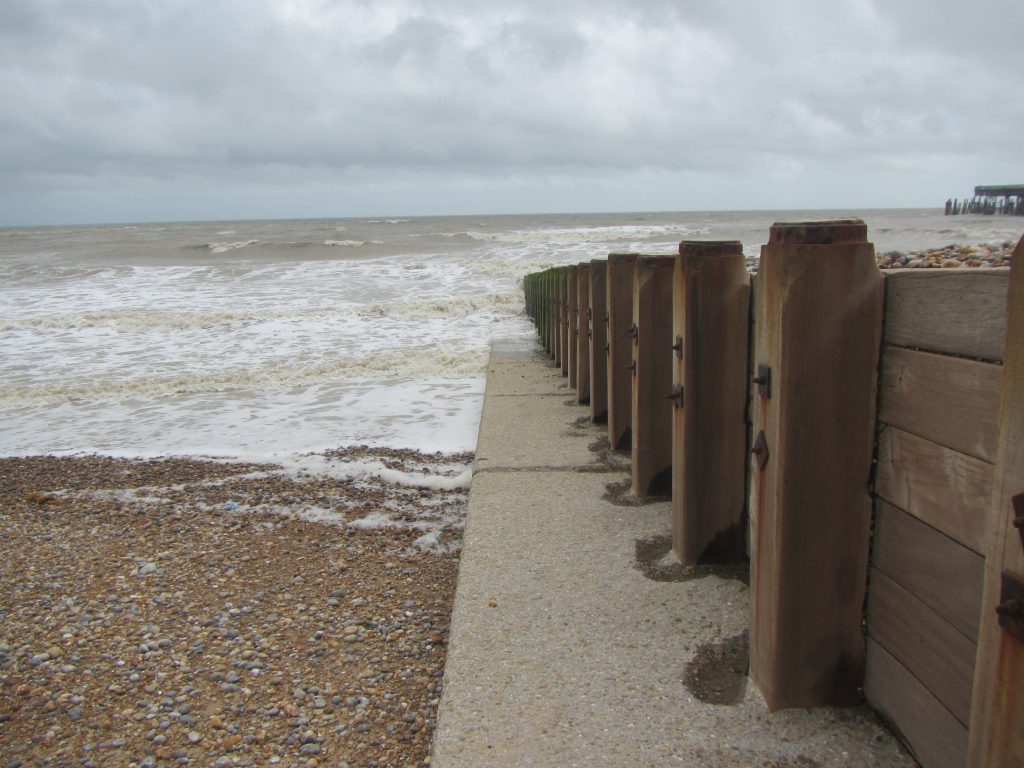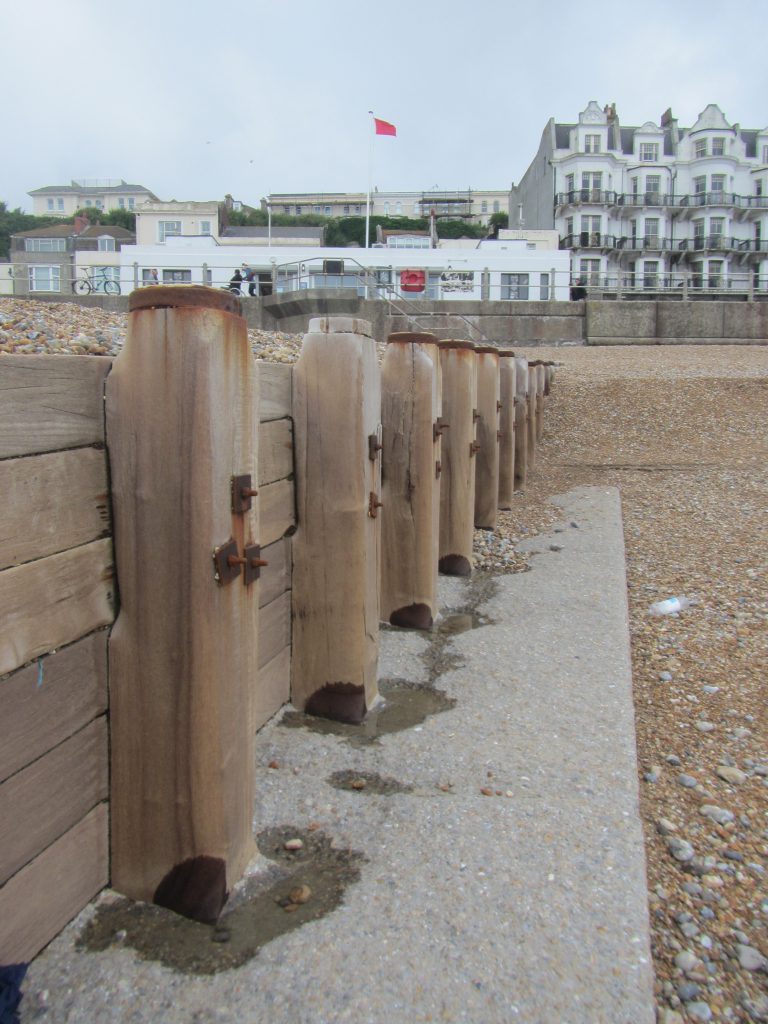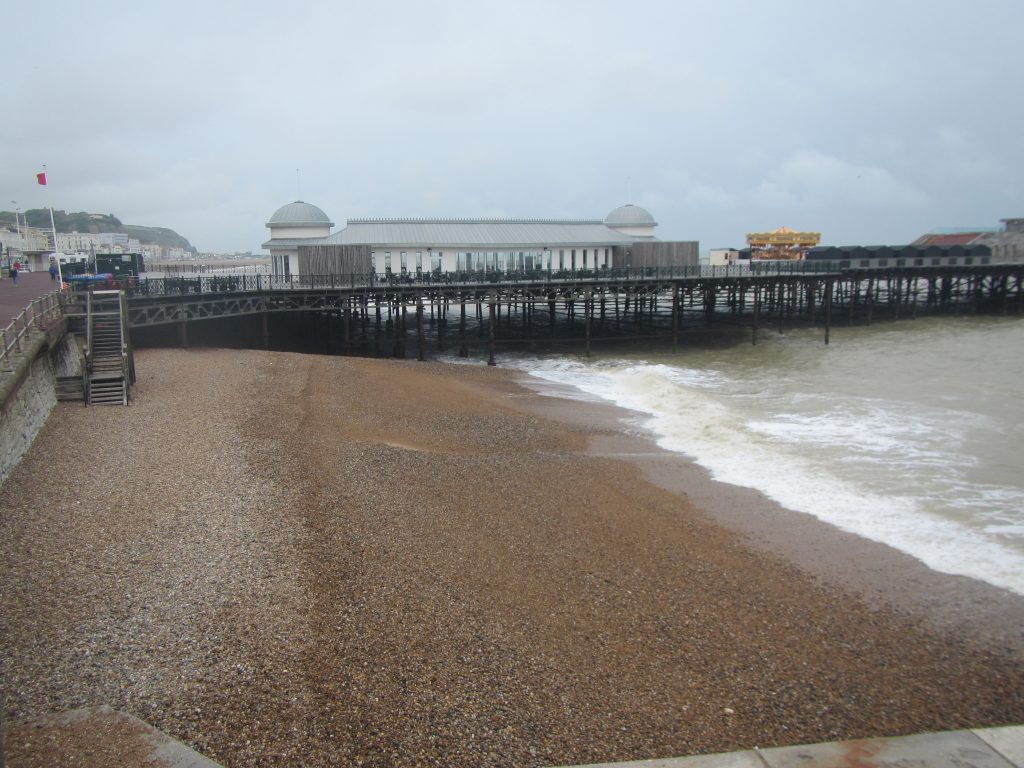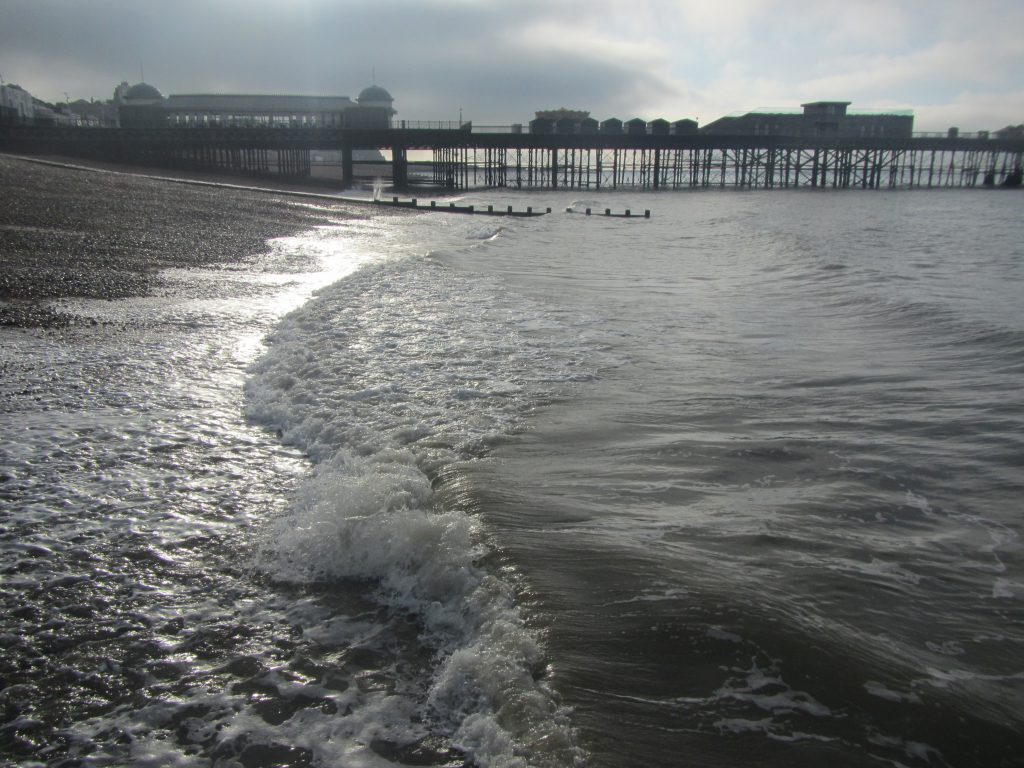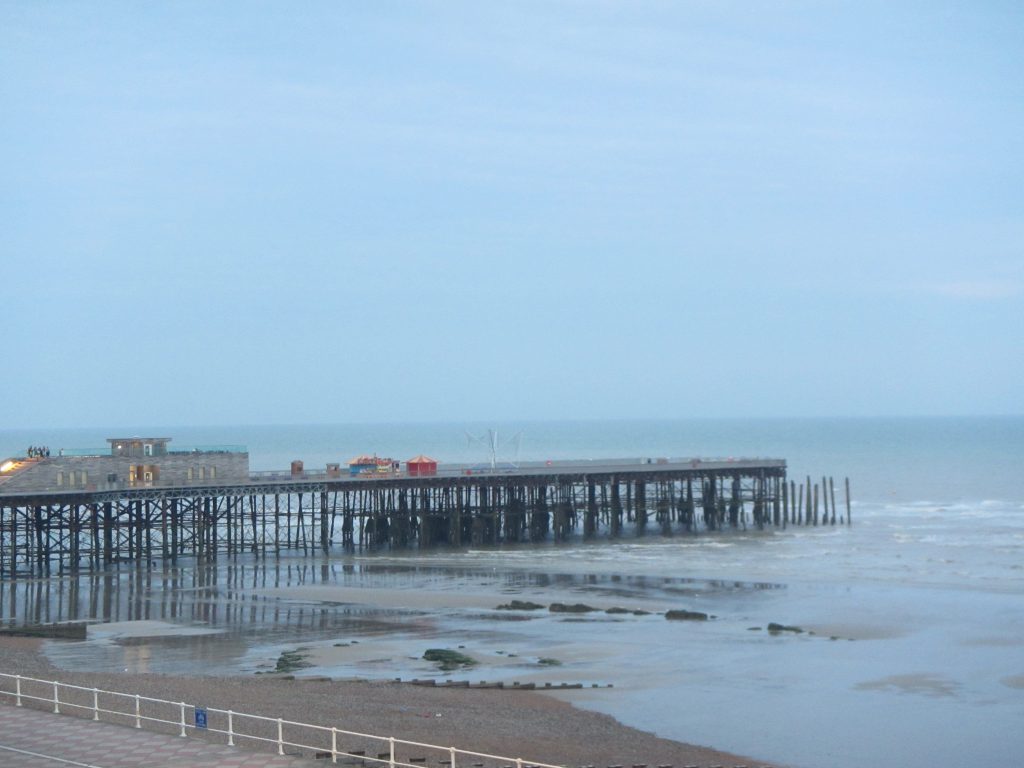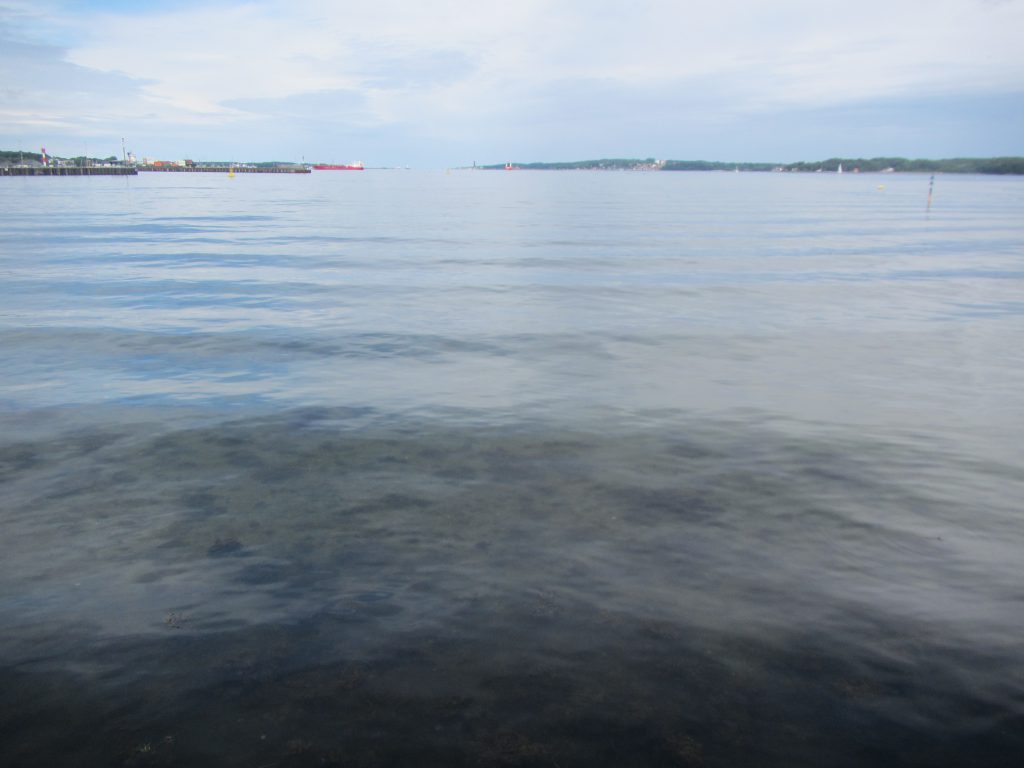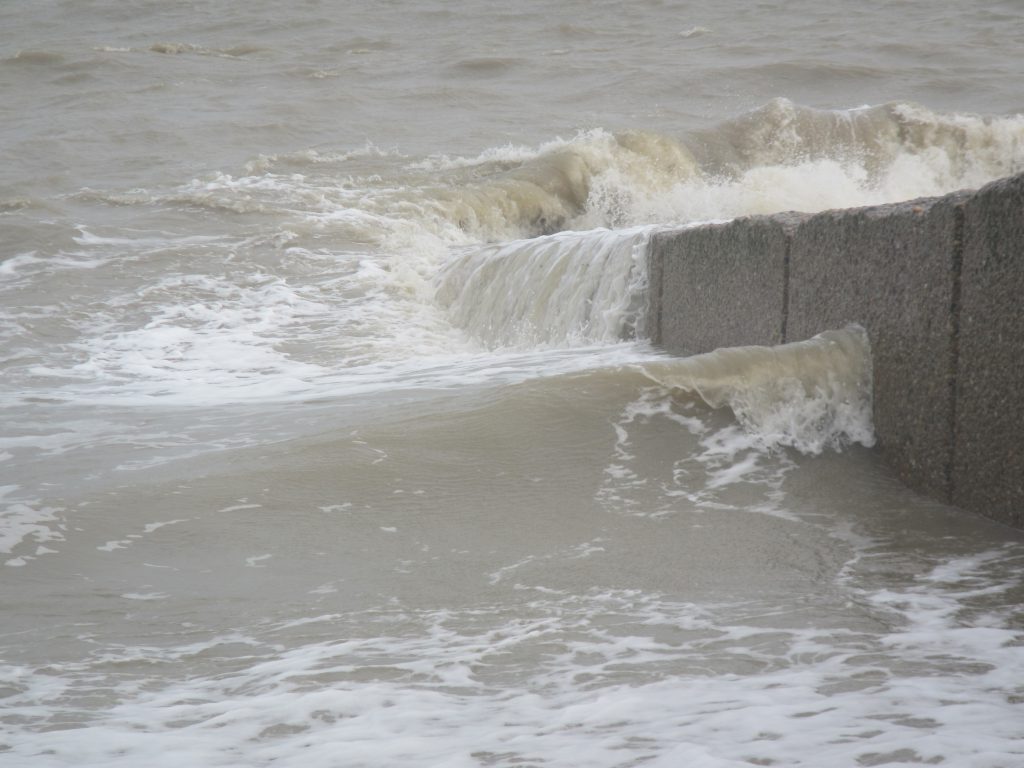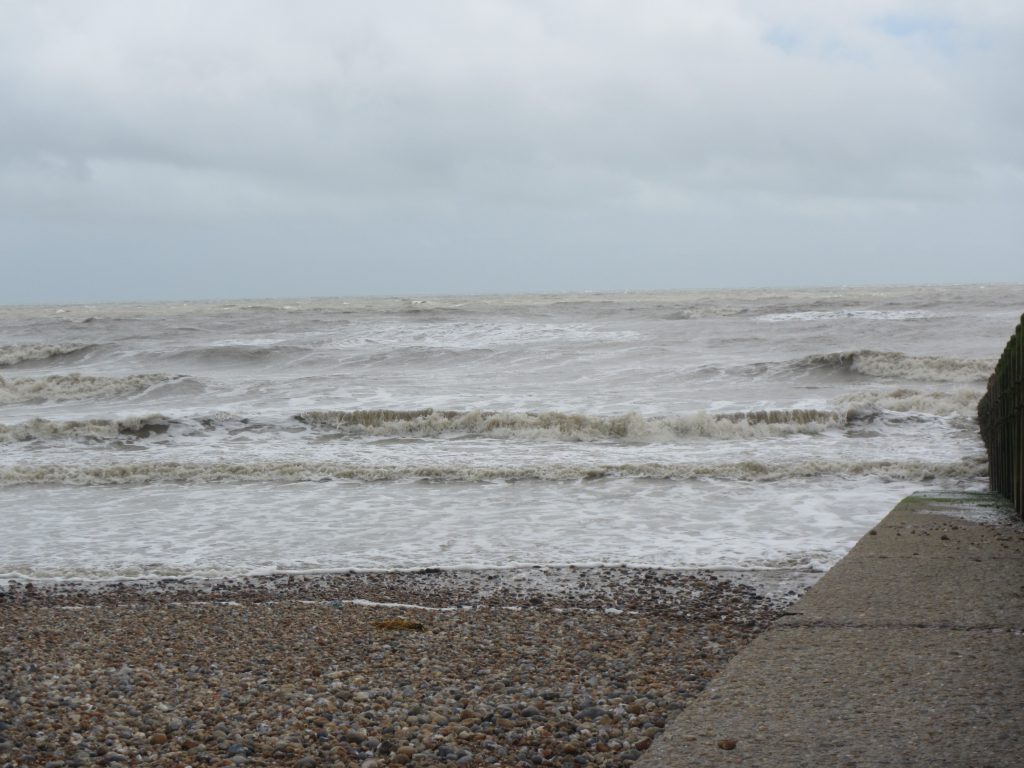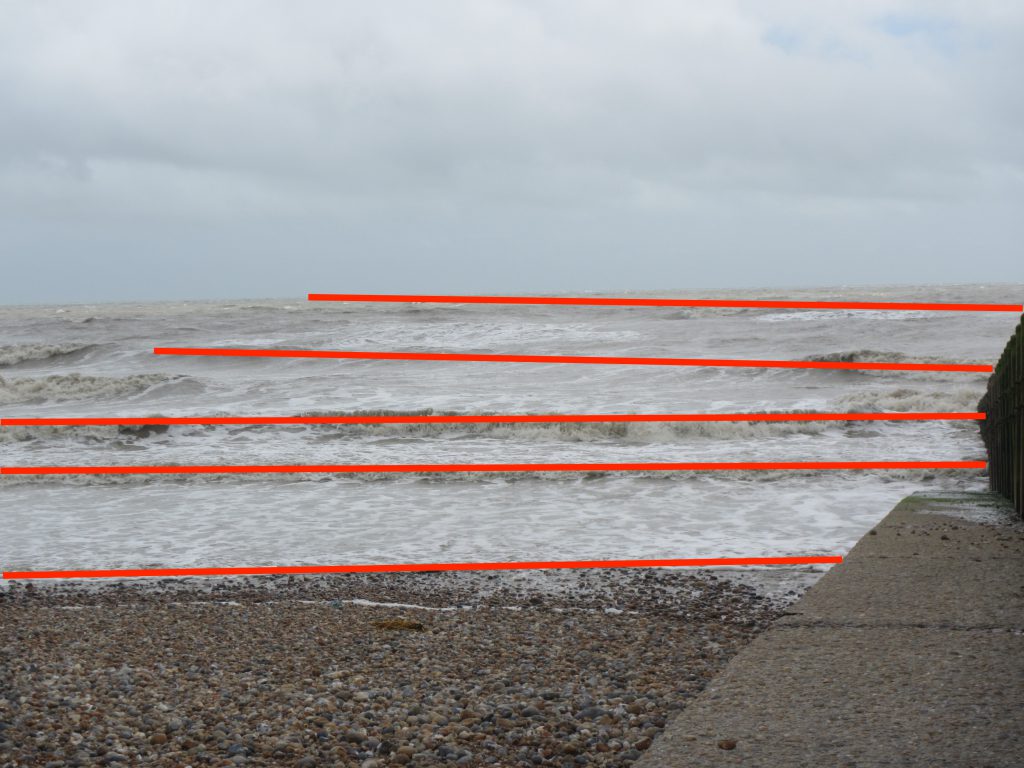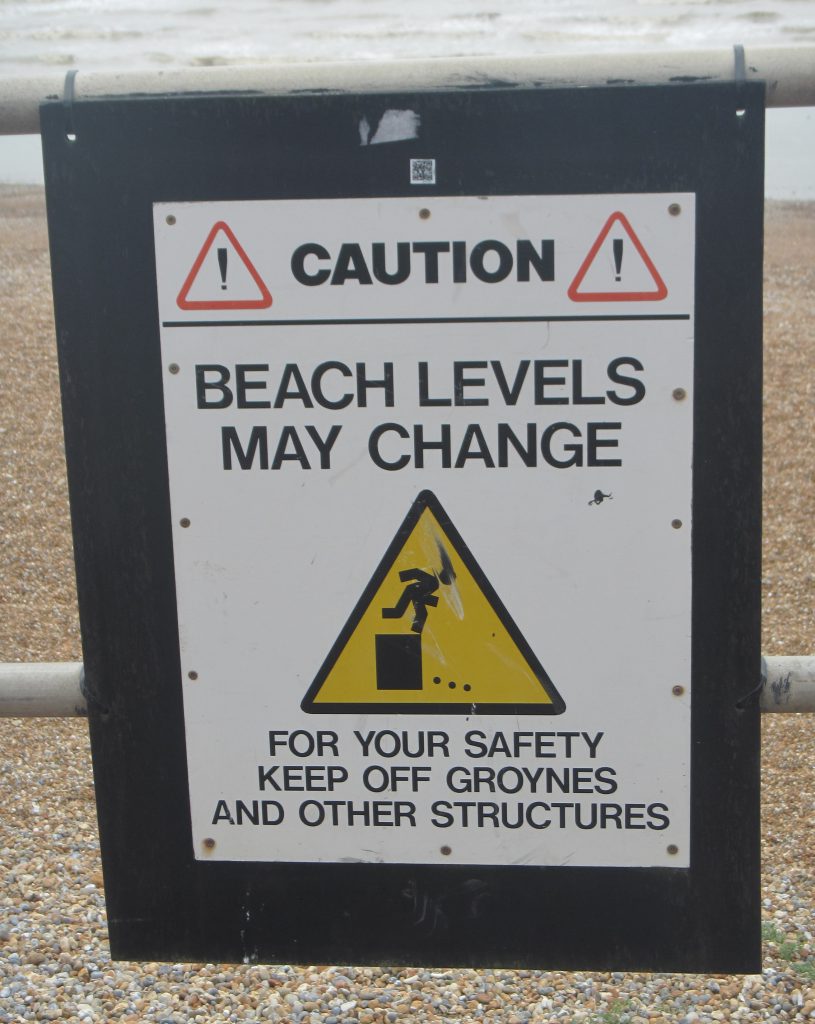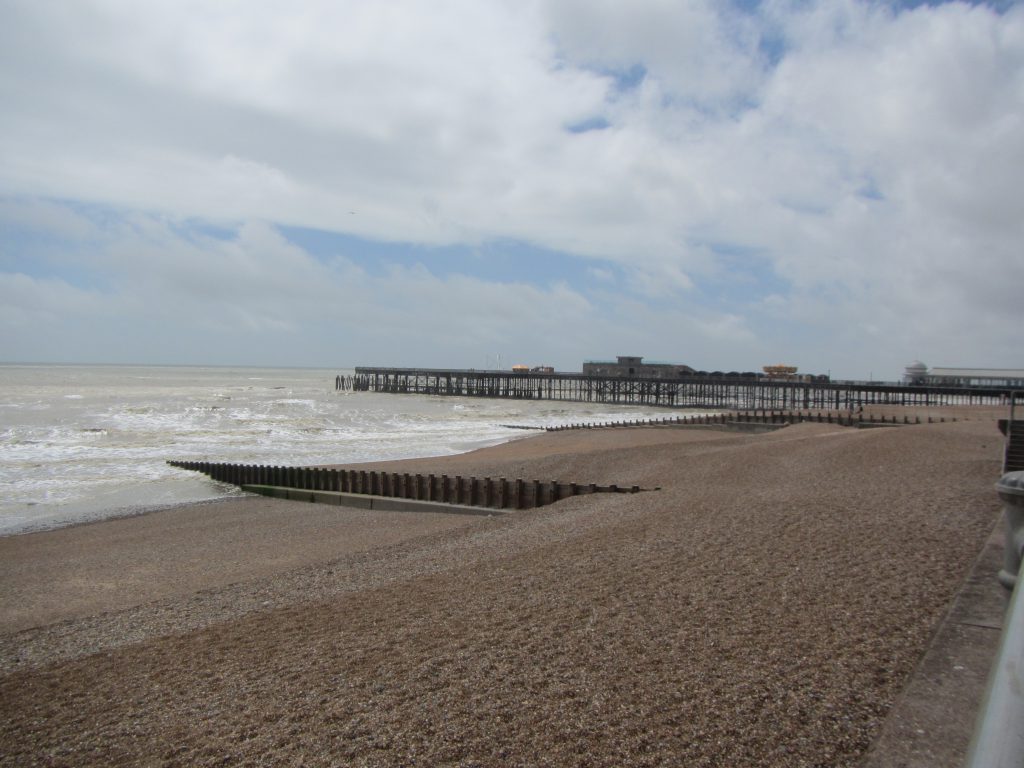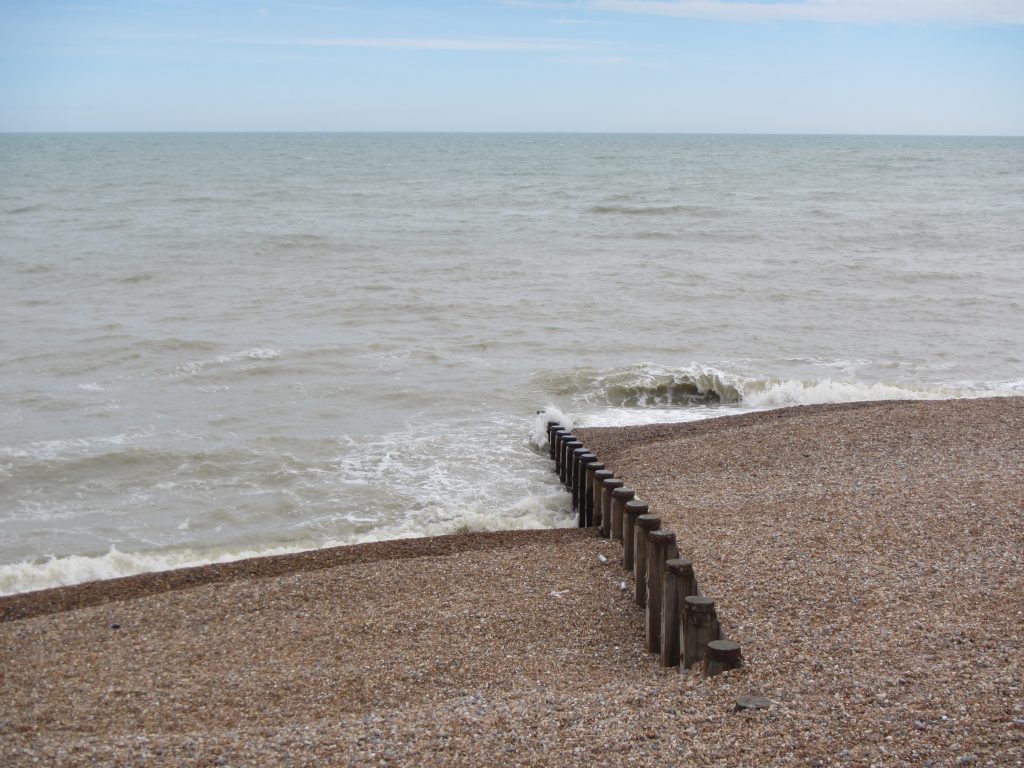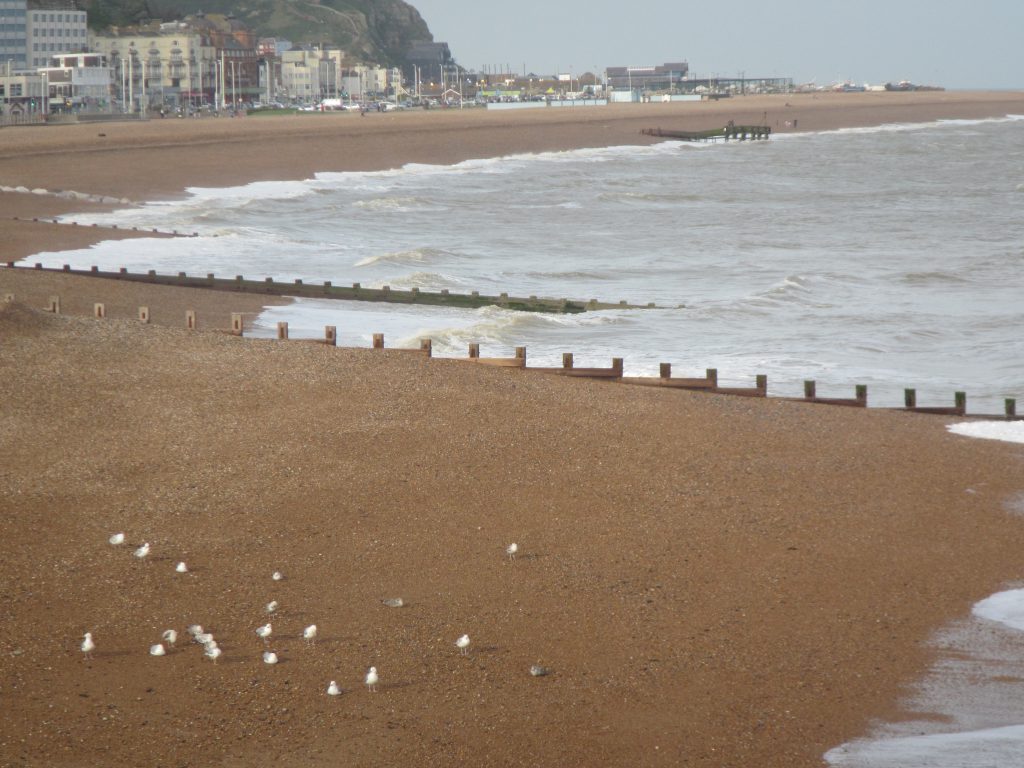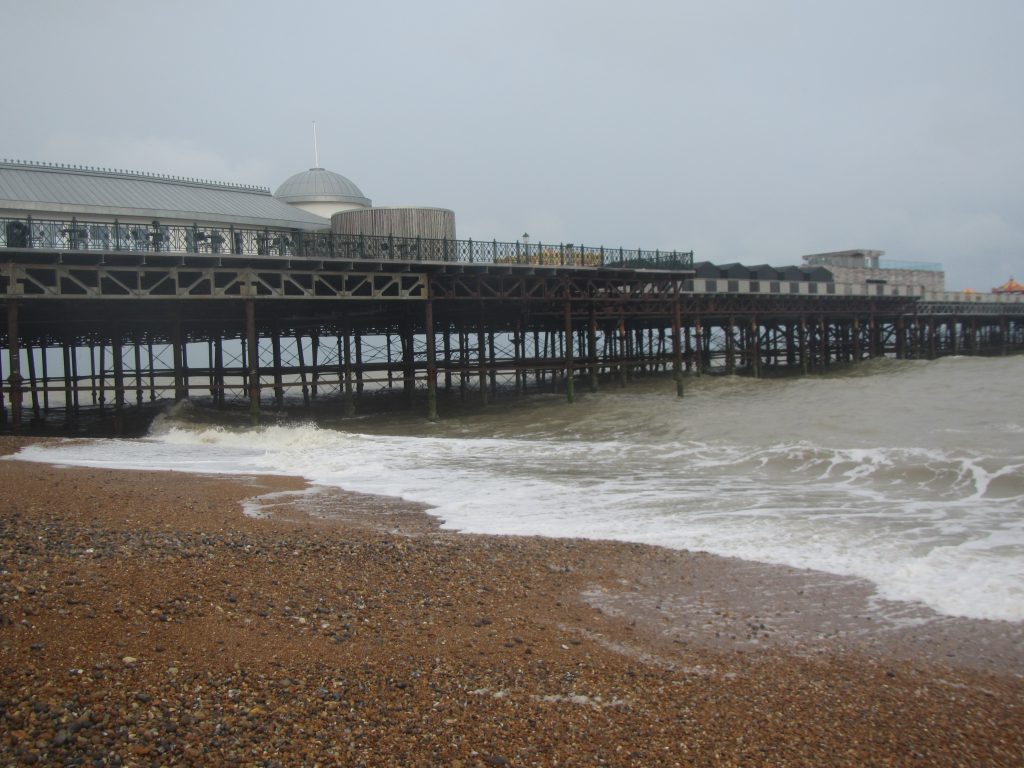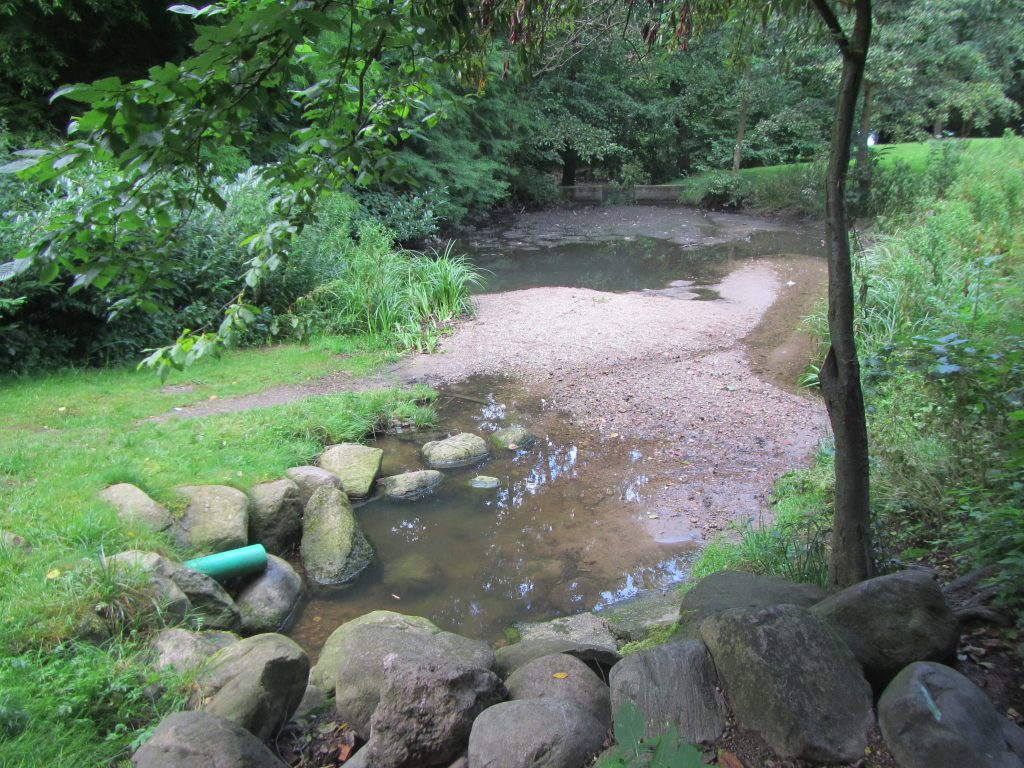Erosion happens not only to sandy paths or beaches on the large scale, but also on a small scale to really sturdy structures like the groynes in Hastings, where each of the massive pillars has its own little dip around it, being bitten into the concrete little by little by the force of the waves, moving little stones around…
We saw it in another post already:
Yes, that’s why there are puddles exactly in the spots where one would like to sit, sheltered from the wind, the back resting against one of those pillars… ;-)
